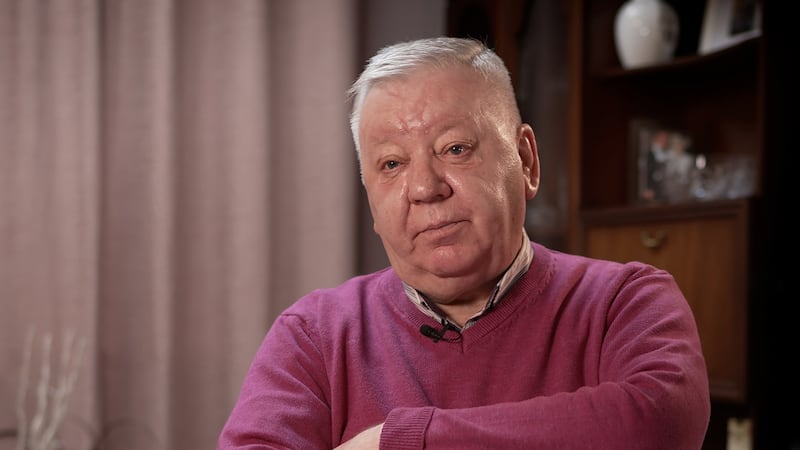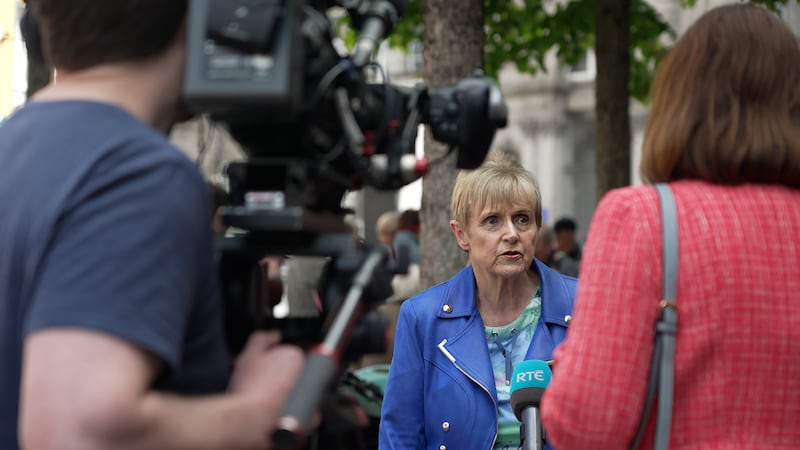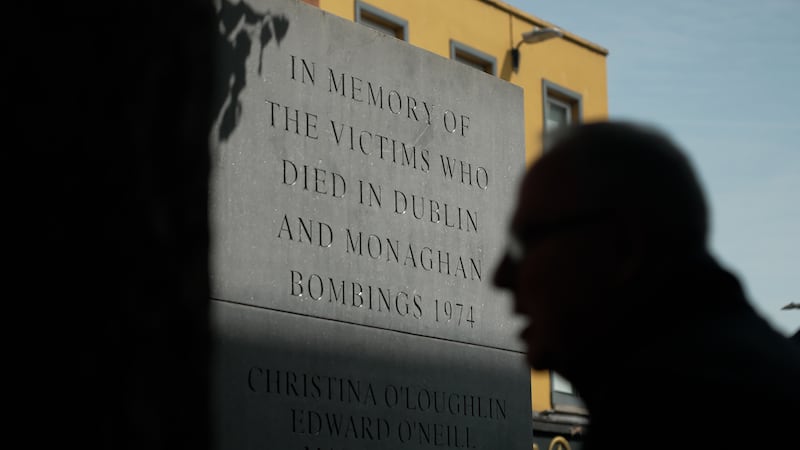There is one thing that Aidan Shields can’t quite remember about May 17th, 1974, but plenty he will never forget.
Shields was 19, living in Artane, in north Dublin, and not long out of school. He was at work that day, as was his dad, Leo. His sisters, Theresa and Fiona, were at home. None of them knew that his mother, Maureen, had decided to drive into town early that evening to collect Leo from his job at one of the Guineys shops on Talbot Street. She was a former civil servant who had recently returned to work, doing the books for a local building firm.
Maureen had had a licence “but never drove until they bought a blue Vauxhall Viva in 1972”, says Aidan. “I remember it well. I drove it afterwards. I even have a picture of it. My father never drove. Because she was driving, it was kind of a novelty for them to drive anywhere.”
Maureen parked on Gardiner Street to wait for her husband. At about 5.30pm, and within minutes of each other, three car bombs exploded in the city centre, on Parnell Street, Talbot Street and South Leinster Street. The second of those explosions killed Maureen. Just before the bomb detonated, Leo had pulled down the shop’s shutters, an act that may well have saved lives and prevented injury to those inside.
RM Block
“As soon as they cleared the shop he would have walked out not knowing she was going to be outside,” says Aidan. “He headed down for the train. When he got to the local pub down the road from us – it’s on his way home; he used to go in on a Friday and have two pints and go home for his dinner – he went in, obviously shocked at what he had seen, and he phoned to say that he was okay and that he would be home shortly. He then was told that we haven’t heard from Mammy – where is she? Then all hell broke loose.”

The Dublin bombings killed 27 people; an explosion in Monaghan about 90 minutes later killed another seven people. With the 50th anniversary looming, the bombings and the ongoing fallout are the subject of May-17-74: Anatomy of a Massacre, a new documentary from the producer Fergus Dowd and the director Joe Lee.
“We wanted from day one to put the victims and their families at the centre of May-17-74. To start with they were just random ordinary people. There was no common purpose to why they were where they were when the bombs went off – ordinary people, going about their business, caught up in a devastating atrocity where they witnessed things they should never have seen,” says Lee.
“Common for many was personal injury and the horror of seeing the impact of the bombs on human bodies and what were familiar streets, now in some way altered forever. The slow realisation in families that a family member was missing. The panic and foreboding of the search in overcrowded city hospitals, then the grim task of identifying loved ones through body parts, bits of clothing or fragments of jewellery. Then the ordeal of the funerals and then, for many, nothing.”
From the documentary’s account of other bombings in the South in the years before 1974, it’s clear that the loved ones of those killed and injured in those incidents feel similarly forgotten. A previous documentary, Hidden Hand: The Forgotten Massacre, made for ITV in 1993, is credited with sparking a push for answers that led to the formation of the Justice for the Forgotten group. According to Margaret Urwin, its chairwoman, what has occurred in the decades since the bombings is, in effect, a double trauma. “It is extraordinary that it was so ignored and neglected,” she says.
Questions about possible collusion between loyalist paramilitaries and security forces in the North have grown over the years, as have questions about a lack of access to key documents that could provide the families with a sense of closure.
Unwin says the initial plan, amid the febrile atmosphere of the time, was for flags not to fly at half-mast on State buildings – a decision reversed only at the last minute, on the day most of the funerals were held. A Garda investigation stalled with astonishing speed, the file closed by the August bank holiday weekend of that year – a fact that Bertie Ahern, who was an accountant at the Mater hospital at the time, and witnessed the aftermath of the bombings, refers to in the documentary. Later, as taoiseach, he launched an inquiry into the bombings, a process that was welcomed by campaigners but ultimately lacked the access needed to uncover the full story.

“Forget about it, get on with your lives,” is how Lee describes the attitude towards those left behind by the events of May 1974. “Trauma and families sundered is a common thread. Families felt that nobody cared this had happened, that Irish society had turned its back on them, and this seemed to echo down the decades of trying to find the truth.”
Inquests were opened but not concluded for decades. (The inquest in Dublin was officially reopened in 2003 and ended in 2004, when a 10-member jury returned a verdict of unlawful killing by person or persons unknown.) Urwin says that, bar one question posed on the first anniversary, the bombings were not raised in the Dáil for 17 years. “I think they were fearful that by pursuing the culprits, the perpetrators of this terrible attack, they might be giving comfort to the IRA, but we don’t know,” she says of the government approach at the time. “We can only make an educated guess. It was such a huge attack, and there was just nothing.”
We headed into the city morgue, and I was interviewed in there and asked a lot of personal questions about [Maureen]. So after a while I was brought in to identify a corpse and, well ... all I can tell you is, after that, it was a closed coffin
— Aidan Shields
It has been claimed that the bombings could not have been the sole work of the Ulster Volunteer Force, the loyalist paramilitary group that belatedly claimed responsibility. Anatomy of a Massacre draws a direct link between the events and other killings, including that of the Miami Showband, pointing to the likely involvement of the infamous Glenanne gang, a UVF unit based in mid Ulster, that included rogue security force personnel. But as the veteran journalist Anne Cadwallader says in the documentary, the real question is what the “puppet masters” did.
What it has all resulted in is questions with no answers – at least, not yet. This year should see the publication of a British review, by Operation Denton, of the activities of the Glenanne gang. Separately, civil proceedings are scheduled to come before the High Court in Belfast claiming that representatives of the UK state either helped the bombers or ran them as agents. That case was secured ahead of the UK’s implementation last week of the Northern Ireland Troubles (Legacy and Reconciliation) Act, which grants immunity from prosecution for those involved in Troubles-related offences if they co-operate with the UK’s new Independent Commission for Reconciliation and Information Recovery. Campaigners are also monitoring a probe by the Police Ombudsman for Northern Ireland into alleged collusion within the Royal Ulster Constabulary, the predecessor of the Police Service of Northern Ireland.

It has been a waiting game – waiting and wondering. The one thing Shields can’t remember is where he was when the news broke that his mother was missing. “There is no reason I should have been at home, but I think I was,” he says. “But I think it was my sister who took the phone call. I was around, because I remember being out at the gate and all the neighbours asking, ‘Is Leo okay? Is your dad okay?’ And I remember then taking several phone calls from his family, my mother’s family, and by later that evening some of them who lived in Dublin had begun to arrive at the house, knowing or feeling that something was wrong.”
He headed into town with the wife of one of the builders Maureen had worked for. She was a nurse, and they made for the hospitals.
“That was mayhem. There was several hundred people injured, 27 people dead,” he says. “We came home, and about half-nine or 10 o’clock I remember somebody said, ‘There is only one place left to go.’ So myself and herself headed into the city morgue, and I was interviewed in there and asked a lot of personal questions about [Maureen]. So after a while I was brought in to identify a corpse and, well ... all I can tell you is, after that, it was a closed coffin.”
Leo died 22 months later. The death certificate cited pneumonia, but Shields believes it was a broken heart.
“He didn’t speak much about it, but he found it hard to get over the fact that they had only begun to get to know each other again,” he says, referring to the easing of time pressures on the couple once their children were a little older. “It wasn’t for a very long time afterwards that I understood what he meant, because I got the same feeling well into marriage – that this woman knows me and I know her and we get on.”
Aidan, who still lives in the house he grew up in, recently became a grandfather again. The recent coroner’s verdict on the Stardust cases gives him hope that justice may finally be delivered. As for his parents, he says, “I keep their memory alive more than on the one day a year.” He likens them to Darby and Joan, the archetypal old married couple from the 18th-century poem: “Old Darby, with Joan by his side/ You’ve often regarded with wonder./ He’s dropsical, she is sore-eyed/ Yet they’re ever uneasy asunder.”
May-17-74: Anatomy of a Massacre premieres at the Light House Cinema in Dublin on Friday, May 10th; it will also be screened at the Irish Film Institute in Dublin on Thursday, May 16th, Nerve Centre, Derry, on Friday, May 17th; and Garage Theatre, Monaghan, on Friday, May 24th

















